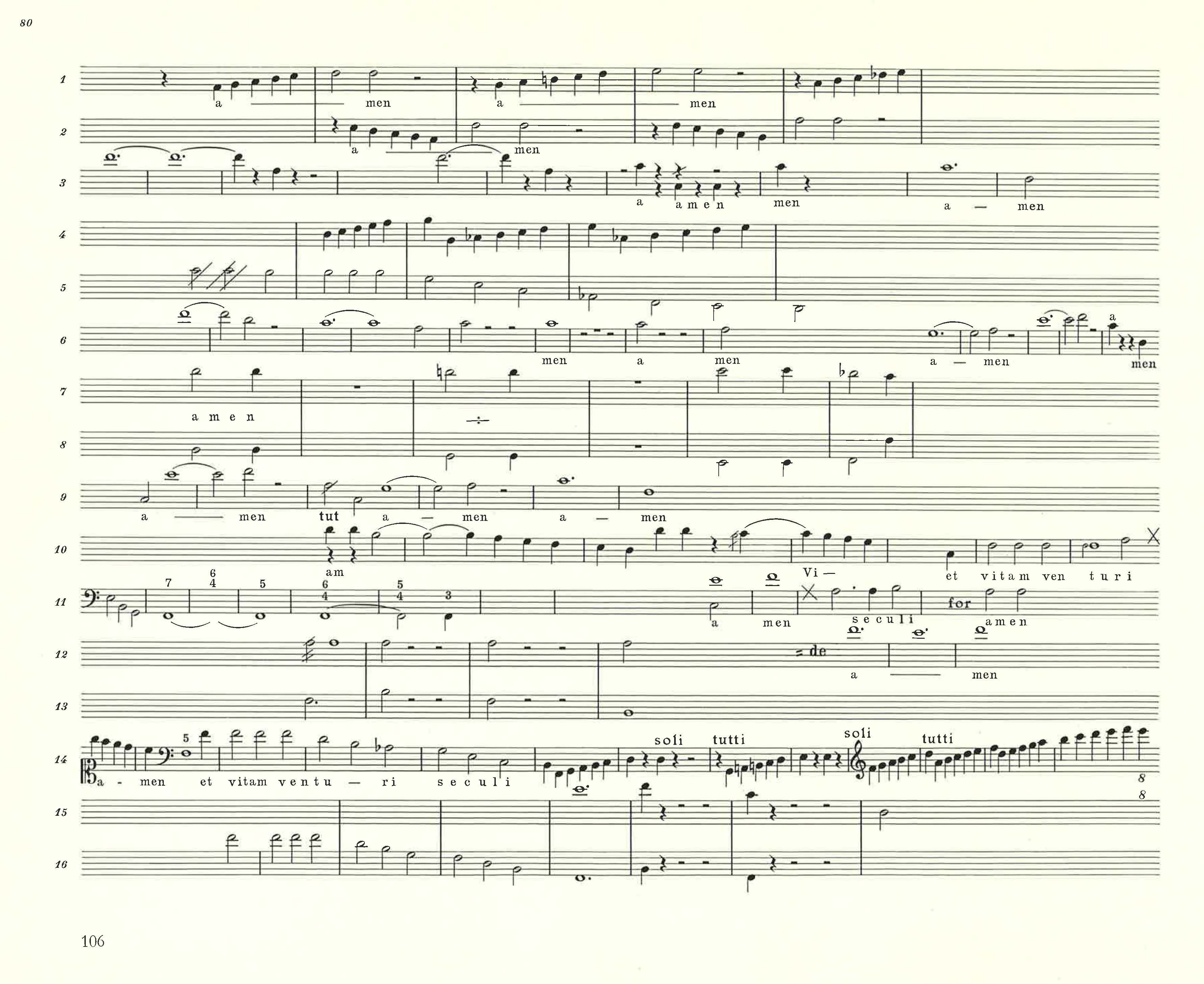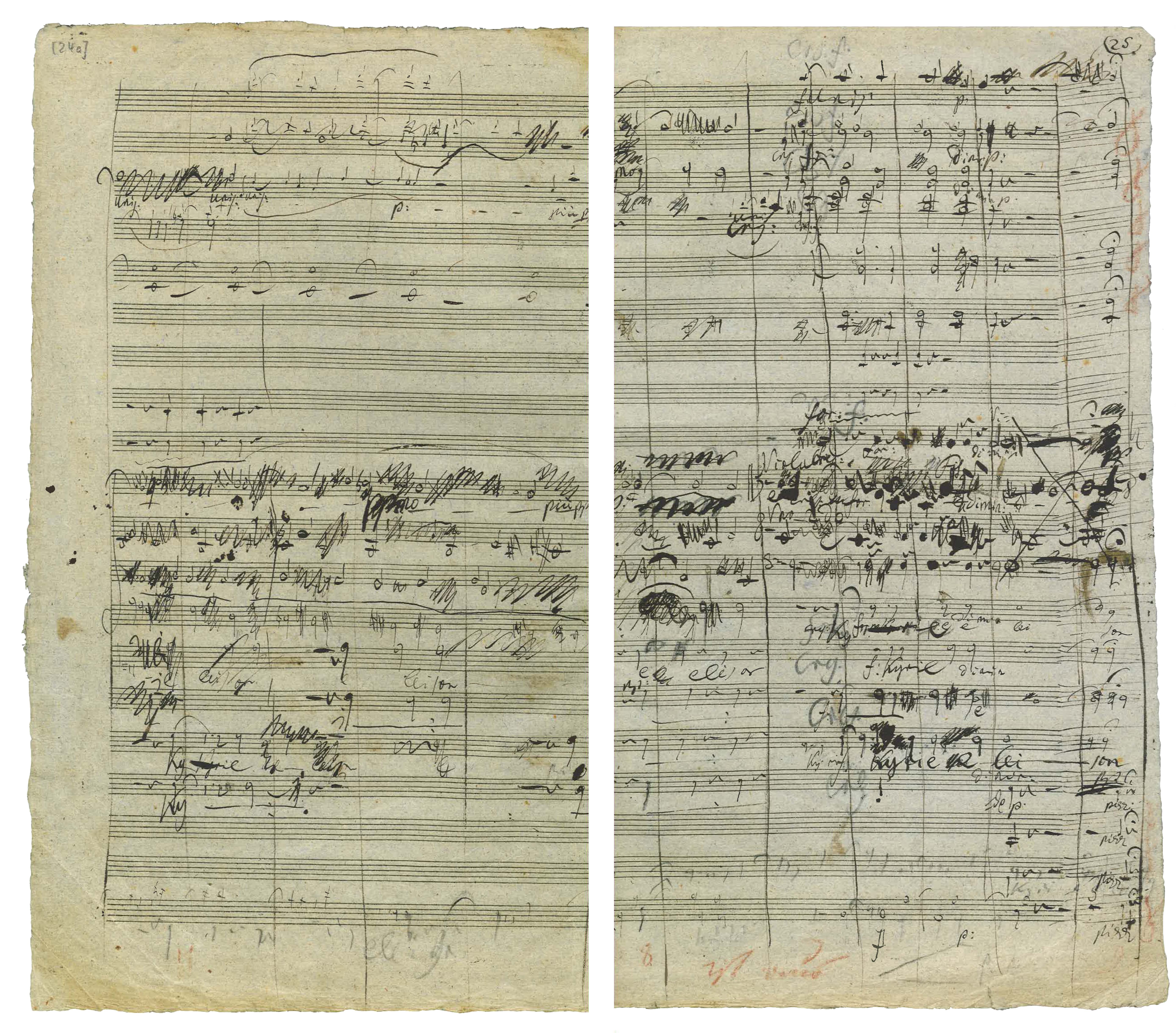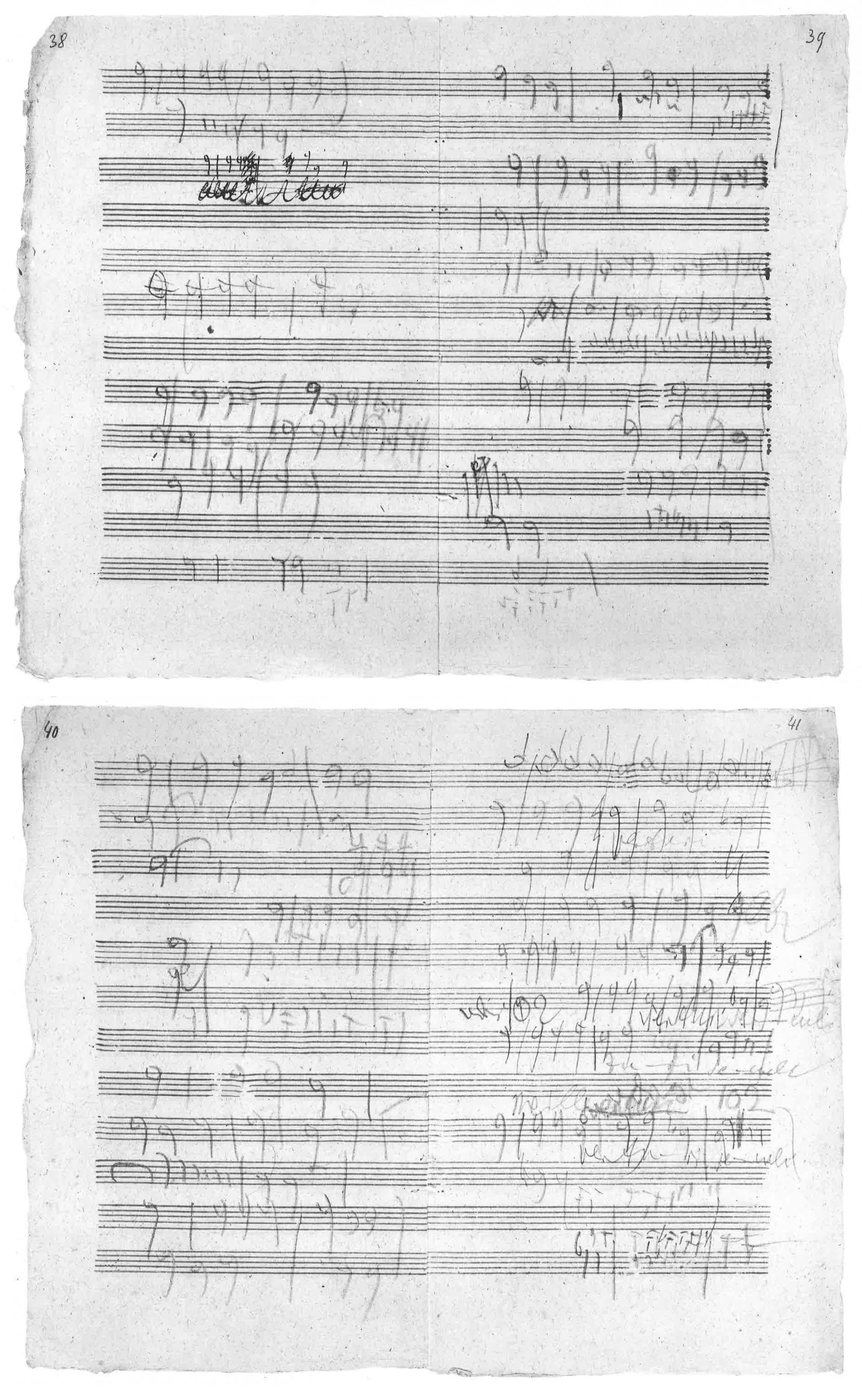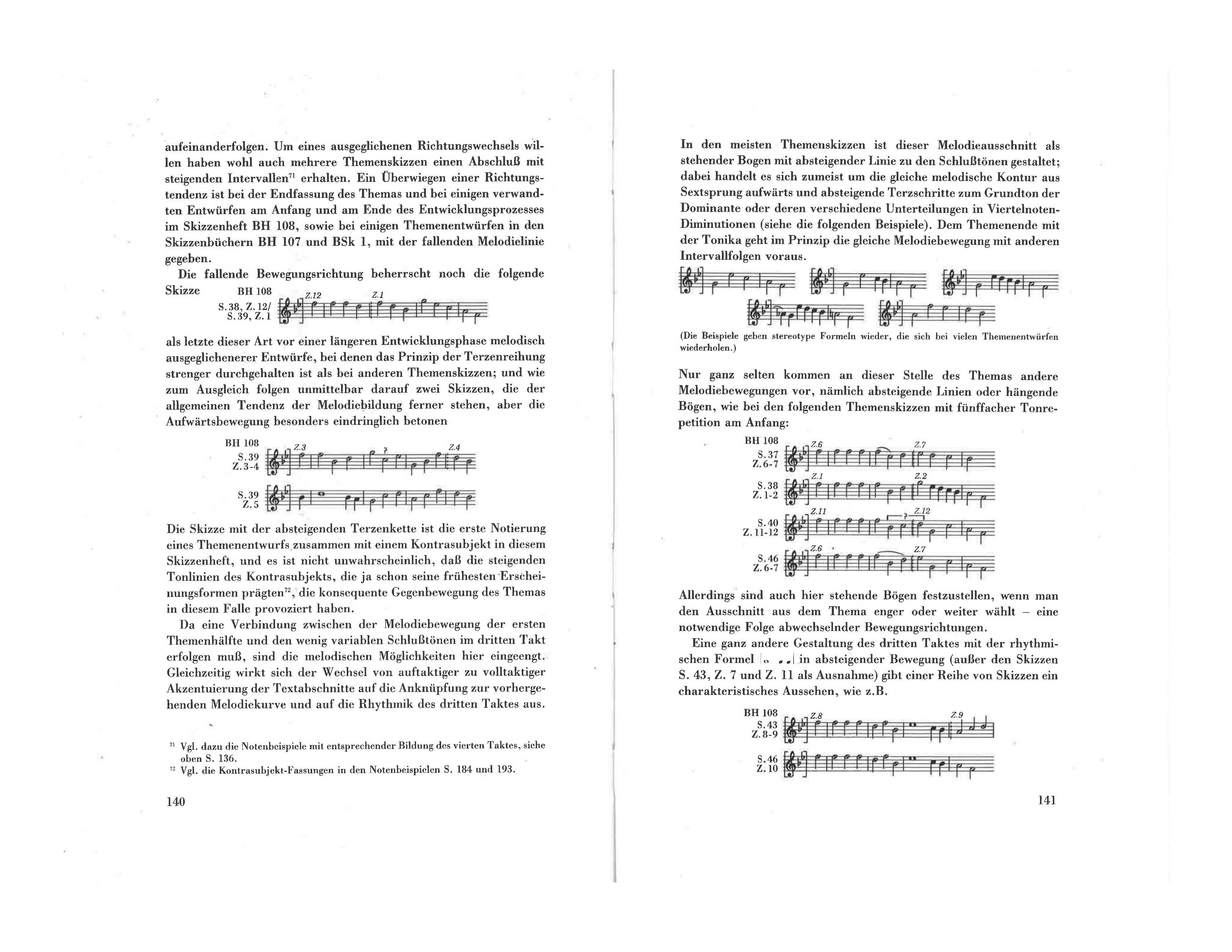Case 2
This selection from the autograph score of Missa solemnis is an example of the way in which Beethoven, especially for his later works, used the paper of the ‘final’ score as yet another creative space within which compositional ideas might be developed, changed, or, in some cases, thrown away completely. When considered alongside the relatively small quantity of surviving sketches for the Kyrie, the chaos of the autograph edition, described by Hans-Joachim Hinrichsen as ‘a battlefield strewn with corrections, where one has the impression of being an immediate witness of the labour of conception,’ suggests that Beethoven carried out much of the compositional work for the movement in the process of penning the autograph. In the selection from the Kyrie featured here, for example, notable are the changes in dynamic and pitch content in the middle of folio 25r where a lighter ink stroke is replaced by one that is both darker and broader. Other writing devices, such as grey and red pencils, were also employed so as to clearly demarcate the various stages of revision. Interestingly, as a first step to notating the autograph, Beethoven provided for himself a rough plan on the lower staves of each page, shown here in the bottom two staves of the pages. Though the rudimentary plans are here left intact, Beethoven would often scratch them out after having worked out the material in the upper staves.

Schmidt-Görg, Joseph, ed. Beethoven: Ein Skizzenbuch zu den Diabelli-Variationen und zur Missa solemnis, SV 154. Facsimile vol. Bonn: Beethoven-Haus, 1968, appeared in 1971. f. 80.

Schmidt-Görg, Joseph, ed. Beethoven: Ein Skizzenbuch zu den Diabelli-Variationen und zur Missa solemnis, SV 154. Transcription, commentary, and critical notes vol. Bonn: Beethoven-Haus, 1968, appeared in 1972. p. 106.
Beethoven’s preoccupation with the fugue theme from the Credo of Missa solemnis, a musical idea to which the composer returned over and over again in numerous sketch sources, approached what might be considered the point of obsession. The pages from BSk1 (top) feature the first iterations of settings for the text ‘et vitam venturi saeculi’ from the Credo, though here it is rather unclear as to whether these ideas were meant for the fugue theme or for the closing section of the Credo where the melodic idea and text return. When combined with the pages from the pocket sketchbook BH 108 (below), one is able to get a sense both for elements of the melodic idea that persist, such as the inclusion of a sequence of thirds, a 3/2 meter, and a repeated opening pitch, as well as for those elements which are altered, such as variations in contour and exceptions to the sequence of thirds.
In his extensive study of the sketching process for the Credo of Missa solemnis, Otto Zickenheiner gives much attention to the formation of the fugue theme, including these comments on content from the BH 108:
"Descending motion dominates the following sketch...as the last of this kind before a longer period of development for a more balanced melodic designs for which the principle of the sequence thirds is more strictly preserved than for other sketches of the theme; and, as if to compensate, two sketches follow immediately thereafter that further the general tendency of the melodic formation, but emphasize the upward motion in a particularly insistent manner...The sketch with the chain of descending thirds is the first notation in this pocket sketchbook of a sketch of the theme together with a countersubject and it is not unlikely that the ascending melodic line of the countersubject, which had already shaped its earliest appearances, provoked the consequential contrary motion of the theme in this case.
Because a connection must follow between the melodic motion of the first half of the theme and the somewhat variable closing pitches in the third measure, the melodic possibilities are here restricted. At the same time, the change from upbeat to downbeat accentuation of the text sections seems to have an impact on the connection to the preceding melodic curve and on the rhythm of the third measure. In most of the theme sketches, this melodic segment is shaped as a standing arch with a descending line to the closing notes. In so doing it is mostly a matter of the parallel melodic contour from the leap of a sixth upward and descending moves by third to the root of the dominant or their different subdivisions in quarter-note diminution (see the following examples). In principle, parallel melodic motion with other descending intervals occurs before the ending on the tonic of the theme...Only very rarely for this setting of the theme do other melodic motions appear, namely descending lines or hanging curves, such as those in the following thematic sketches with five repetitions of the same pitch at the beginning...However, if one selects a shorter or longer section from the theme the stationary arch here are also established–a necessary consequence of alternating direction of the motion."


